I am not sure if it was Tony Bennett or Diana Krall who made me understand that. Maybe it was just the chorus on Allright, Okay, You Win, that triggered something in the subconscious, but I felt that the new Yamaha A-S2200 was about to get under my skin.
It may have been the retro design that drew me to it in the first place, but after a few weeks on the test bench, it is the sound from the A-S2200 that, in my book, makes it stand out as the most convincing amplifier in a long time.
The integrated A-S2200 is the middle in Yamaha’s series of three premium-class integrated amplifiers – the A-S1200, A-S2200 and A-S3200. Which are all built in the same way, but more lavish with more expensive components, more powerful power supply and better mechanical quality, as the price increases.
The amplifiers are pure analog constructions, completely without digital connections, streaming or network connection. That can quickly be a dealbreaker for many, who would rather choose the Hegel H190 or the Naim Uniti Atom, which has all this, but lacks something that the Yamaha amplifier has: Turntable input. Both for MM and MC pickup.
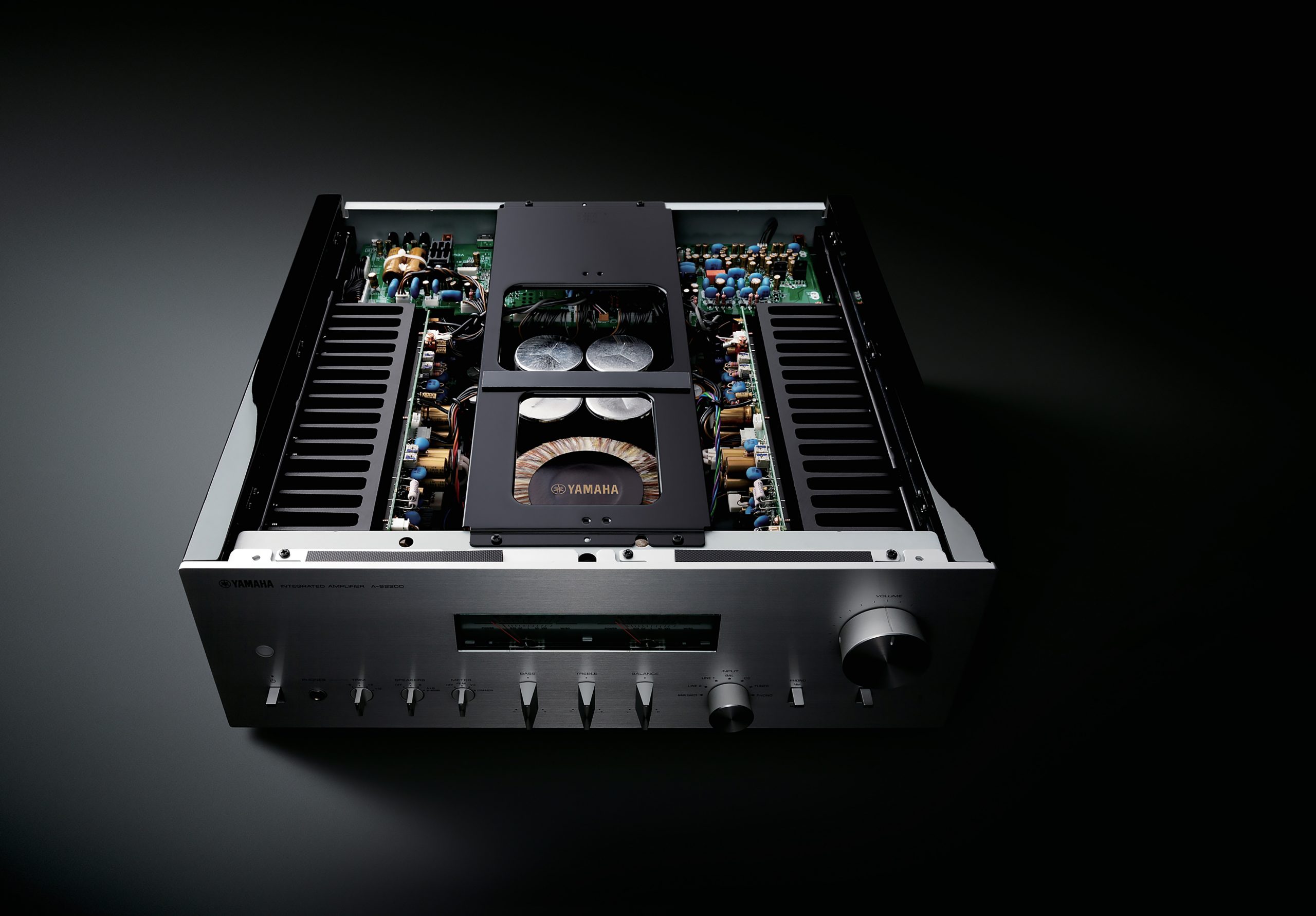
In that sense, Yamaha competes more with the Marantz Model 30, which also has no DAC or network, but a very well-sounding turntable input.
Balanced and analog
The three new integrated Yamaha amplifiers have taken a lot from the high-end amplifier set C-5000 and M-5000, and Yamaha says that they have tried to preserve the legacy of the 5000 set by copying the mechanical and electrical circuit solutions, only scaled down to integrated amplifiers.
This means that the similarities between the three amplifiers are more prominent than the differences. Except that the A-S1200 does not have a balanced circuit all the way, like the two more expensive amplifiers have. It also does not have the brass base on the transformer and the same expensive PC-Triple C cables on the outputs, or the headphone output with discrete circuits, which the more expensive amplifiers have.
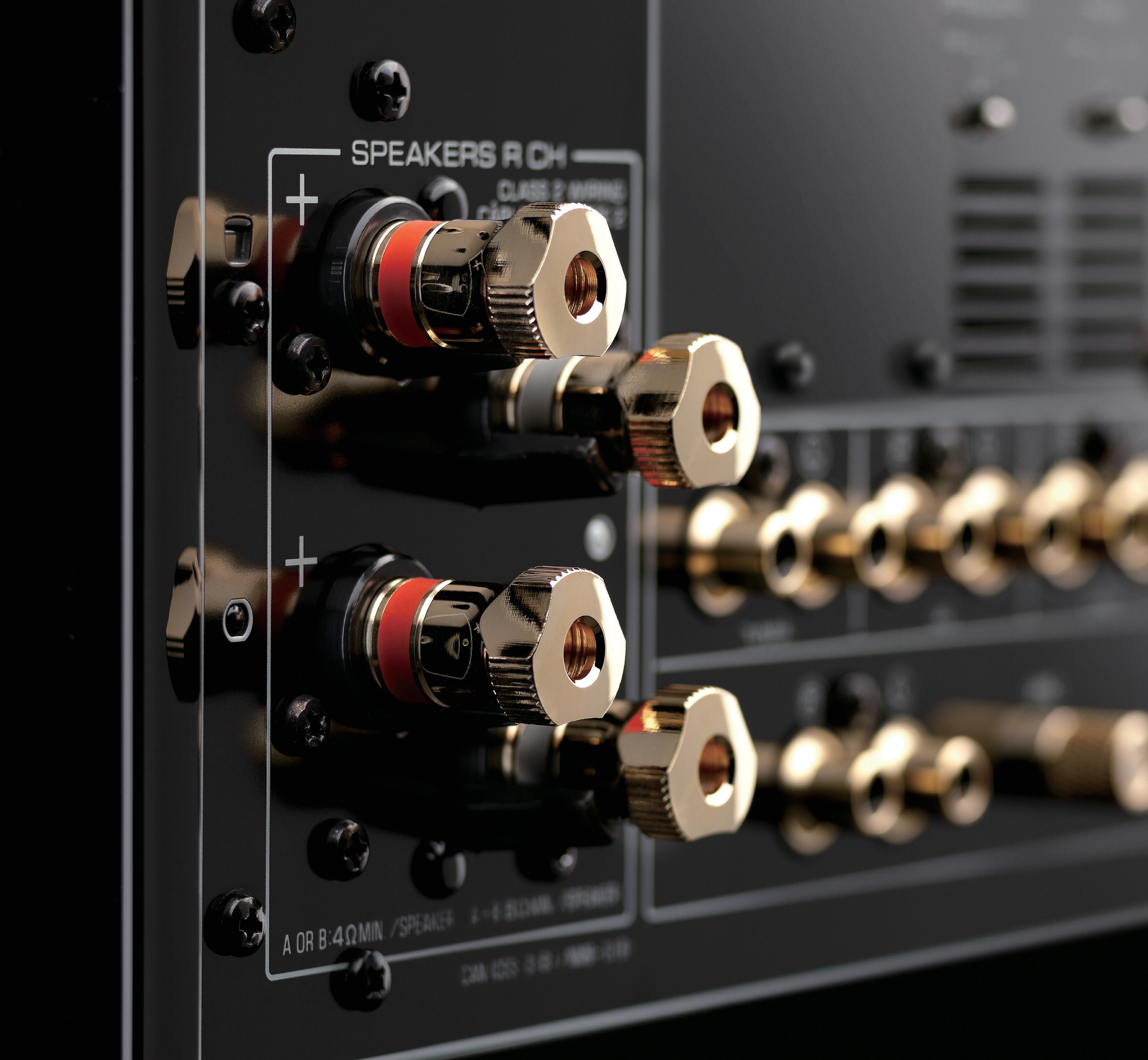
Elaborate quality
The Yamaha amplifier is unashamedly elaborate. The three sides in black piano lacquer and the brushed aluminum front in black or silver, the analogue power meter, and the silky soft controls – including the volume control, provide a really substantial dose of luxury.
A nice detail is the way the volume control physically turns up or down, when you press the mute button.
There backside is none the worse, where solid, dual, speaker terminals flank a golden array of analog inputs, including a balanced input (on which you can invert the polarity), and input for turntable.
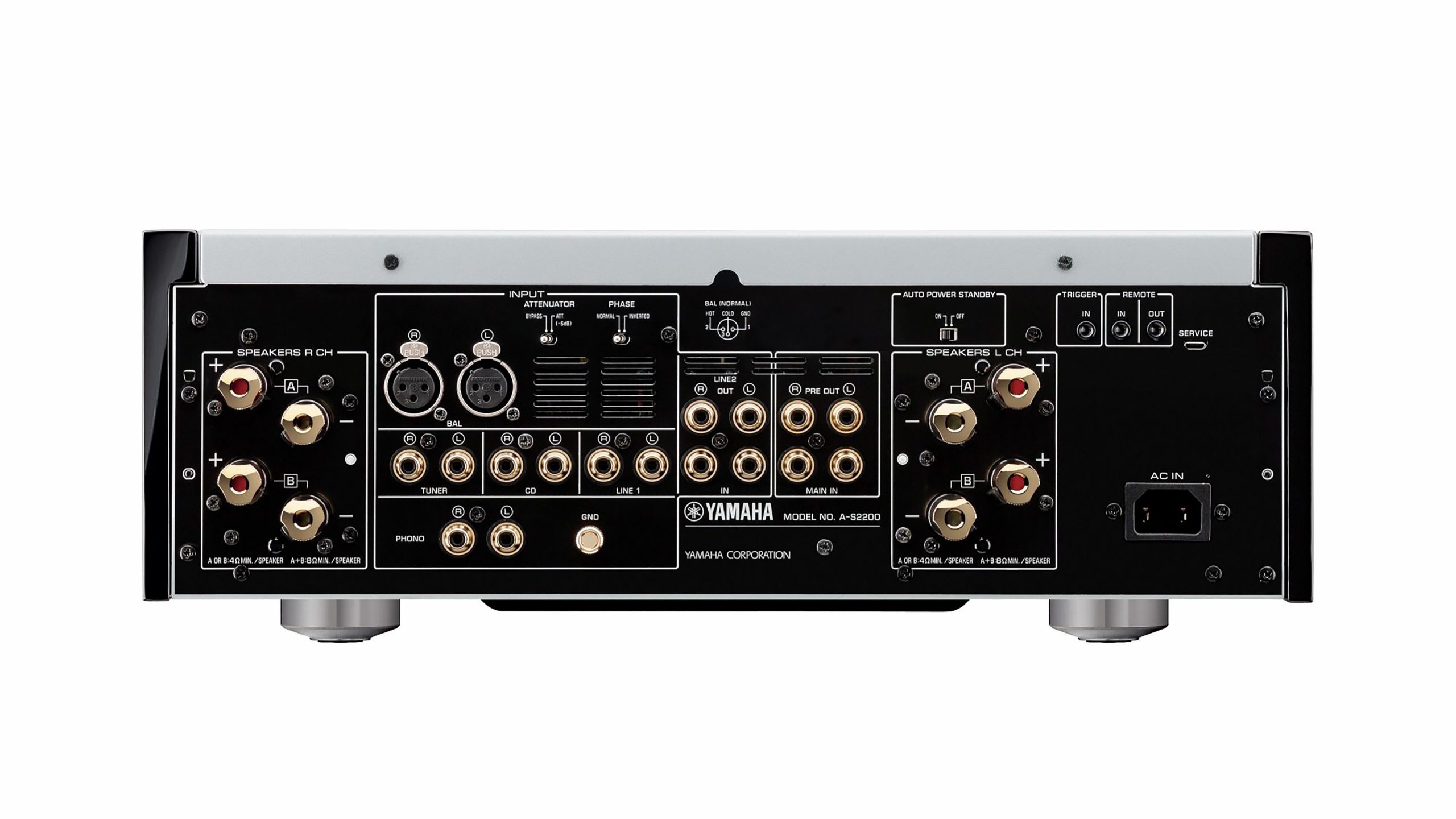
You can use most MM and MC pickups on the A-S2200, but we miss the opportunity to at least match the load of a MC pickup. Similar to what Marantz offers on the Model 30: 33, 100 and 390 ohms, or as Yamaha does on the preamplifier C-5000.
Steel and silk
That’s about the only thing we have to blame on the Yamaha amplifier. For the turntable input sounds excellent. Super detailed, open and with the vibrant dynamic contrast that lifts dull recordings. But be sure to match it with a motorcycle pickup that thrives with a 50 ohm load. MM pickups are pure plug and play, at 47 kOhm.
But it is through the balanced input with a CD player as the sound source, that it really sparkles from the Yamaha amplifier. Since Yamaha was unable to find any of the soon-to-be-sold and outgoing Yamaha players in the CD-S series, we used our McIntosh MCD600, which also has digital inputs, as the main source, and I will say kicked life in the camp .
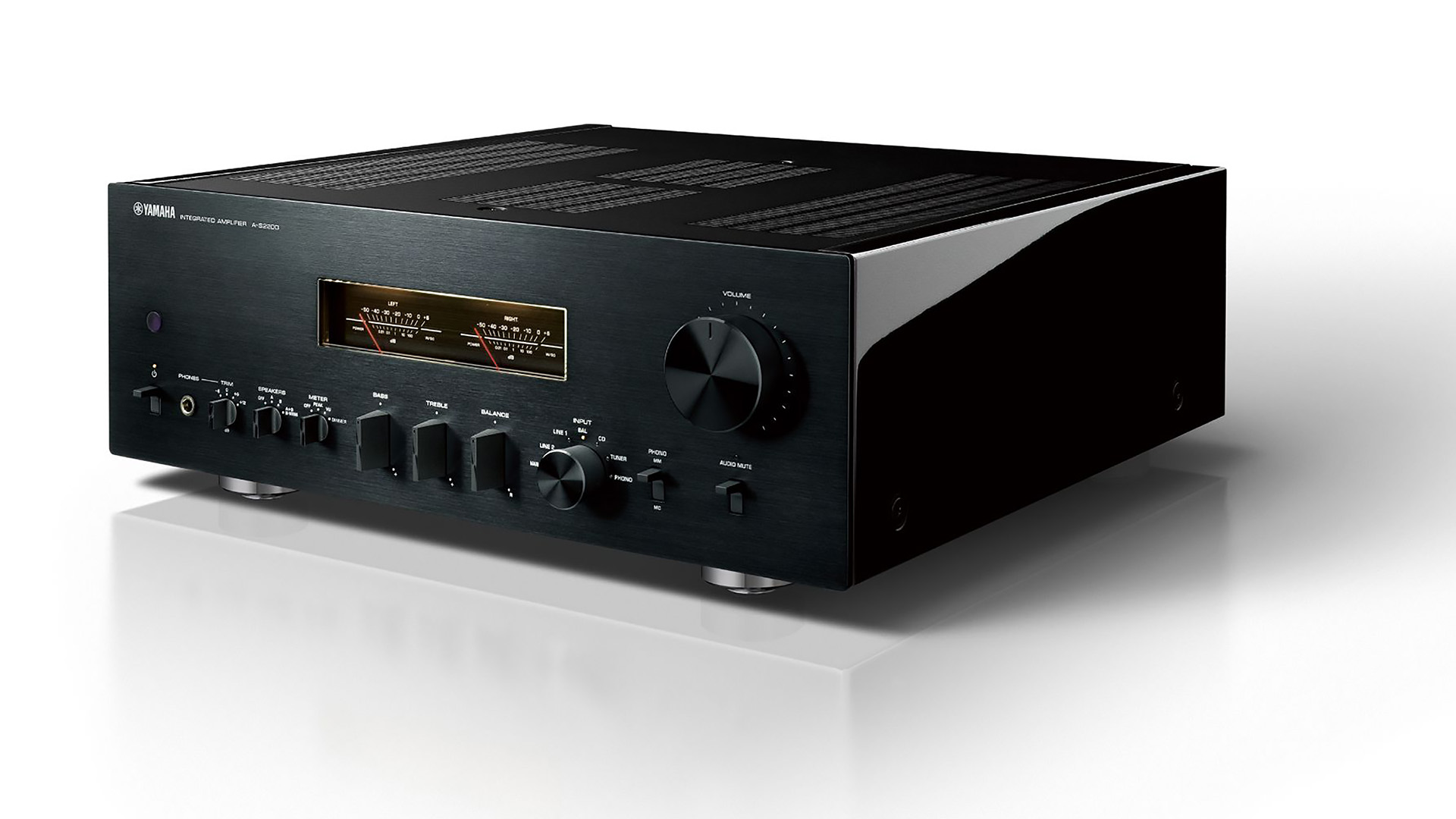
But first we unpacked the A-S2200 and put it next to a Hegel H360. A little A/B testing revealed that the Hegel amplifier has tighter bass dynamics and more power and control when playing loud, but the Yamaha amplifier has fatter bass and a much more spacious feeling. At our Sonus faber Olympica III, Leif Ove Andsnes’ Beethoven recording gained more depth and timbre, and the piano tones sounded more like the Yamaha amplifier.
The same goes for the Hegel H190, which, like the H360, has reference qualities in its class, but also here the Yamaha amplifier delivers the music wrapped in gold and shiny silk, while the Hegel amplifier for comparison, wraps the music in a neutral, polished steel frame with associated weight.
Perhaps the most surprising thing about the A-S2200 was the way it reproduced bass. There was more of the drumming of Pick Withers or Jack DeJohnette, and especially big drums, but also double basses. Which is perhaps better defined on the H190, but not as juicy and heavy as on the Yamaha amplifier.
The small Audiovector R1 Arreté, won a lot on Yamaha’s generous bass dynamics, and it gave the piano sound at Keith Jarrett’s Cologne concerto, more sound depth and a solid foundation.
Voices is another area where the A-S2200 shines, giving instant goosebumps on opera arias, as well as Diana Krall and Tony Bennett in duets. Choral singing has seldom been heard so precise and sonorous, and it brings out details in an extremely fine-meshed soundscape, which tells us that Yamaha has worked hard to remove the gray veil that often accompanies many amplifiers.
Even in this price range.
Conclusion
The Yamaha A-S2200 does not cover everyone’s needs, but with primarily analog audio sources, the integrated amplifier plays heavenly. It sounds far louder than stated, and opens up to music in the same way as when a rug is pulled from the edge of the stage. You feel like clapping your hands when the music stops, it’s so engaging. It reproduces bass and drums with an authority that makes Lars Ulrich blush, sopranos sing like angels, and ignites the heat of romantic ballads, that will leave the windows foggy.
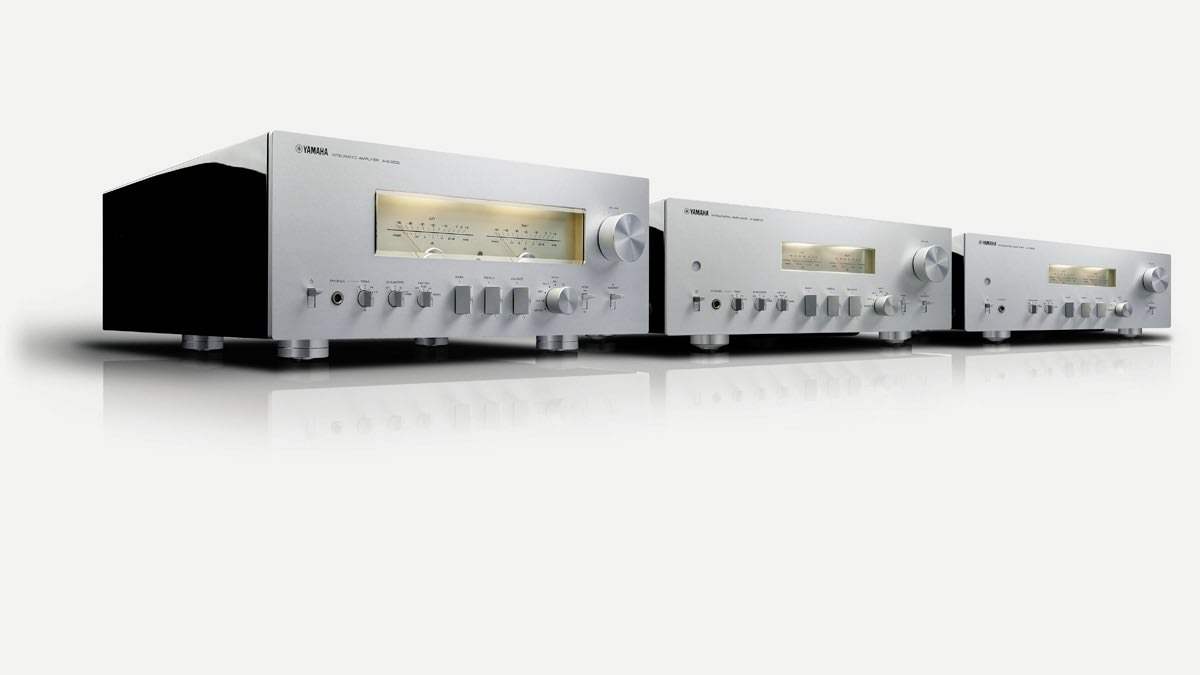

We think
Sublime music communicator with superb sense of space and crystal clear openness. Plays bass with compelling authority. Very well-sounding phono input. Has no digital inputs and no adjustments on the turntable input.
€
Specifications
- Type: Integrated amplifier
- Power: 2 x 105 W in 8 ohms, 2 x 190 W in 4 ohms
- Technology: Transistor, class AB
- Connections: 5 x unbalanced, 1 x balanced XLR, pre-out, direct in
- Turntable input: 150 μV / 50 ohm (MC), 3.5 mV / 47 kilo-ohm (MM)
- Headphone output: Yes (dicrete circuit)
- DAC: No.
- Network: No.
- Frequency range: 5 Hz – 100 kHz (+0, -3 dB)
- Dynamics: (not specified)
- THD: 0.005%
- Signal/noise ratio: 110 dB (CD), 96 dB (MM), 90 dB (MC)
- Finish: Silver or black
- Other: Remote control
- Dimensions and weight: 43.5 x 15.7 x 46.3 cm / 22.7 kg
- Web: yamaha.com
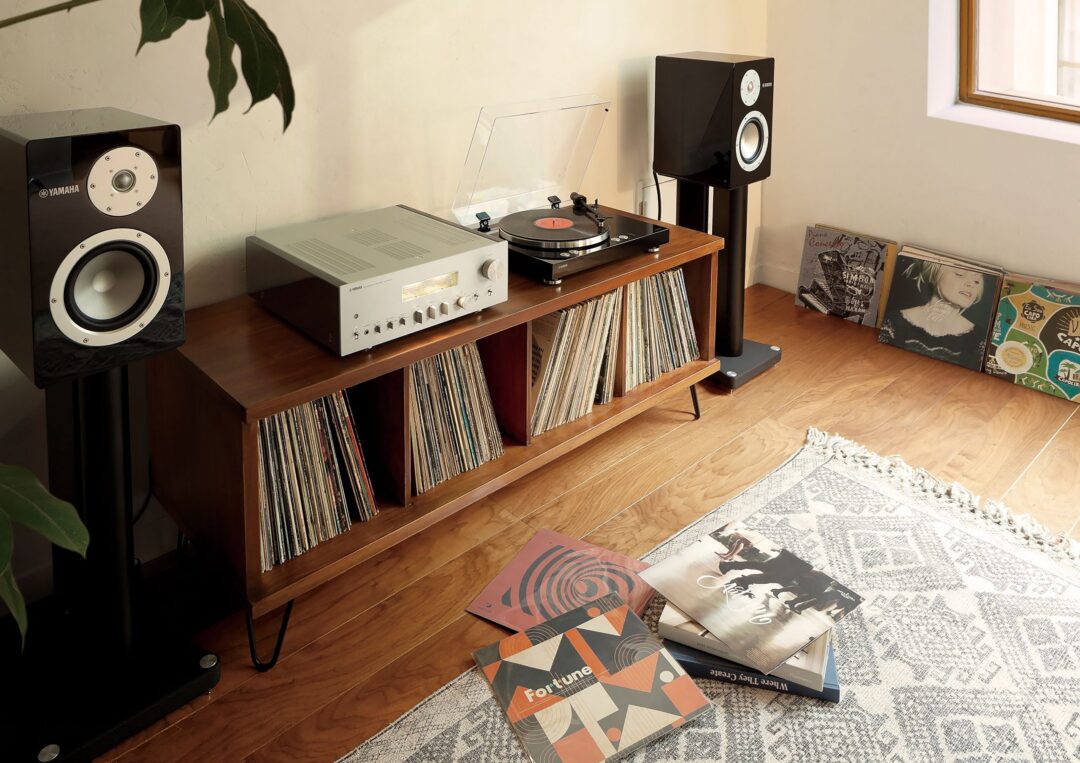



As always, there is no difference between the 2200 & the 3200. Buy a McIntosh and you will get better in every respect.
There’s always someone who has to make a statement that has nothing to do with it. This isn’t a review of Mcintosh.
I do own the 2200 after listening to the 1200 the bass was firmer and a bit stonger. Fantastic sound, very open. Twice the value of the Rega Elect-R and the Musical Fidelity M5si both near the same Price. Use them with Totem Fire Element séries and Focal Electra BE. Nice…
Those Yamaha’s 2200, 3200 and the previous 3000 are worth every penny and more. Too bad the McIntosh fan boy’s cannot stand the competition. But if you must, yes, do compare with the Mac’s cheap plastic knobs versus the CNC-milled solid stell ones on the Yam, look at the mac’s standard solder wire connections versus the Yams hard-wired connections, and the sublime overall Yam aircraft casing versus the Mac’s mundane painted black jacket. You are paying a lot for the name with a mac, while Yamaha’s top offerings are true bargain, from a company that knows and manufactures most every instrument in a symphonic orchestra. Ever heard of a McIntosh grand piano played on a world stage? Yet the musical ears at Yamaha do the final voicing on their flagship audio designs. And don’t get me started on the new crop of mAc’s tacky looks complete with fake green LED lights through the vacuum tubes….I use to like the look of history with Macs, know they completely ruined it. Better yet, forget all of the above and do a comparative listening session. If you like the Mac better, buy it! I once did, but could never achieve the refinement their prices commanded, so I sold it after 3 months and replaced it with Yamaha years ago. Enough said!
I totally agree with Mike, I’ve owned several Yamaha amps, and I’m loving the 2200, it’s a great piece of kit!👍
Agree with everything above. I would add though, the AS2200 can sound a little hollow in the mid range. And the excellent top end and separation could be described as analytical, depending on your taste – it is a revealing amp that has the potential to change what songs you enjoy to listening to. In a good, and bad way.
I love my A-s2200. With JBL L-82 it is a match made in 1970s. Hahaha. While only a couple months old it is a tad hollow in mids which is why ai take a line out into a a Super Nait 3 powering a pair of Spendor 3/1s. Lol. I wanted the JBL L-100s but my wife would notice them because I was running JBL 4406s. I bought the black A-S2200 because I replaced a black Denon amp. Her lack of noticing details such as meters on the Yamaha or L-82 stands vs brackets on 4406s, plus I had 2 pairs of 4406s is one of the things I adore about her. As well as she does not notice additional Sig p320s that are black compared to aa Glock. Just stick with black y’all! Seriously, the Yamaha is a very nice amp. Look for an online dealer with open box. You can get one for about $2500 in black. At full retail I am not sure. I would probably get a Macintosh cause I love plastic knobs and even though does not sound as good. Well I just gotta have that snob appeal when my wife has dinner parties. Same reason I bought a Paul Reed Smith guiter. I never play it. It is on wall. I just strap it on at dinner parties. I play my dull looking plain top Les Paul ‘58 reissue. But you know, isn’t the whole reason husbands suffer through wife’s dinner parties is so husbands drive home envious about my toys?